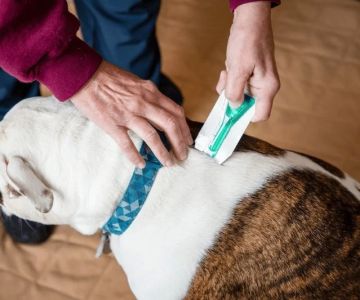- Why Cat Scratching Posts Are Essential for Your Pet’s Wellbeing
- Planning Your DIY Cat Scratching Post and Play Area
- Materials and Tools You Will Need
- Step-by-Step Guide to Building the Scratching Post
- Designing a Play Area That Stimulates Your Cat
- Tips for Maintaining and Enhancing Your Cat Play Area
- Real-Life Success Story and Professional Advice
Why Cat Scratching Posts Are Essential for Your Pet’s Wellbeing
Scratching is a natural and necessary behavior for cats. It helps them keep their claws healthy, mark their territory, and relieve stress. Without a proper outlet, cats often resort to scratching furniture, which can frustrate pet owners and lead to damaged belongings. Building a cat scratching post and play area provides an engaging environment that satisfies these instincts while promoting physical activity and mental stimulation.
Understanding the importance of such structures goes beyond simple convenience—it enhances your cat’s overall quality of life. A thoughtfully designed scratching post combined with a play area can prevent behavioral problems and even reduce anxiety, especially for indoor cats who lack outdoor outlets.
Health Benefits of a Scratching Post
Scratching helps cats stretch their muscles, particularly in their paws, legs, and back. It also sheds the outer nail sheaths, keeping claws sharp and healthy. When combined with a stimulating play area, this setup encourages exercise, helping to maintain a healthy weight and prevent lethargy.
Behavioral Benefits and Territory Marking
Cats have scent glands in their paws; scratching deposits these scents, marking territory and offering a sense of security. Without proper scratching outlets, cats may become frustrated or stressed, leading to unwanted behaviors such as inappropriate scratching or excessive meowing.
Planning Your DIY Cat Scratching Post and Play Area
Before you start building, it’s crucial to plan carefully to ensure the final product fits your home, suits your cat’s preferences, and is safe and durable. Different cats have different scratching preferences: some prefer vertical posts, others horizontal pads, or even angled surfaces. Consider observing your cat’s current scratching habits to tailor the design effectively.
Choosing the Right Location
Location matters. Cats often like to scratch near their favorite resting spots or high-traffic areas where they can mark territory. Find a place that’s accessible but doesn’t obstruct daily household movement. A corner near a window is often ideal, offering natural light and an engaging view.
Incorporating Play Features
The play area should stimulate your cat’s curiosity and agility. Integrate climbing platforms, hanging toys, or tunnels. Planning a multi-level design can keep your cat entertained for hours. Think of it as creating a small indoor jungle gym that caters to your feline’s hunting instincts and love of exploration.
Materials and Tools You Will Need
Gathering quality materials is key to durability and safety. Common materials include untreated wood, sisal rope, carpet remnants, and soft cushions. Avoid treated or painted wood that can be toxic to cats. Sisal rope is a favorite for wrapping posts because it’s tough and satisfying for scratching.
Essential Tools
Basic carpentry tools will be needed: a saw, drill, screwdriver, staple gun, measuring tape, and sandpaper to smooth edges. Safety is paramount; ensure no sharp edges or loose parts remain after assembly.
Optional Accessories
Adding bells, feathers, or dangling toys can increase engagement. Consider soft cushions or fabric for comfort on platforms, but ensure they are securely fastened to avoid choking hazards.
Step-by-Step Guide to Building the Scratching Post
Step 1: Constructing the Base
A sturdy base prevents tipping. Use a wide wooden board, ideally at least 18x18 inches, and sand all edges. For extra stability, add rubber pads underneath to prevent sliding.
Step 2: Wrapping the Post
Cut a wooden post about 24 to 30 inches tall. Wrap it tightly with sisal rope, securing ends with non-toxic glue or staples. Ensure the rope is firm and evenly spaced to withstand vigorous scratching.
Step 3: Adding Platforms and Toys
Attach platforms at varying heights with secure brackets or screws. Fix toys to the sides or hang them from the top to encourage jumping and batting. Adding soft cushions on platforms can provide cozy resting spots.
Step 4: Final Assembly and Safety Check
Assemble all parts firmly, double-checking for loose screws or sharp edges. Observe your cat’s interaction initially to ensure safety and durability.
Designing a Play Area That Stimulates Your Cat
A successful cat play area goes beyond just scratching posts. It should encourage natural behaviors such as climbing, stalking, and hiding. Using vertical and horizontal elements, tunnels, and interactive toys enriches your cat’s environment.
Incorporating Vertical Space
Cats love to perch high and observe their surroundings. Adding shelves or cubbies at different heights allows for safe climbing and resting. Use sturdy materials to support your cat’s weight.
Creating Interactive Zones
Set up zones with different textures and toys to keep your cat mentally engaged. Rotating toys regularly keeps the area fresh and interesting.
Tips for Maintaining and Enhancing Your Cat Play Area
Regular maintenance ensures the longevity of your DIY cat playground. Replace worn sisal rope, clean cushions, and check for loose parts. Pay attention to your cat’s changing preferences and adapt the setup accordingly.
Encouraging Use and Positive Associations
Use catnip or treats to encourage your cat to explore the new play area. Praise and gentle petting reinforce positive experiences. Avoid forcing your cat, as patience is key.
Seasonal Adjustments and Additions
Consider adding cozy blankets in colder months or cooling mats in summer to keep your cat comfortable. Seasonal toys or new elements keep the play area engaging year-round.
Real-Life Success Story and Professional Advice
Jessica, a cat owner from Seattle, shared how building a custom scratching post and play area transformed her indoor cat Luna’s behavior. Before the project, Luna often scratched furniture and seemed bored. After installing the post and a multi-level play zone, Luna’s destructive scratching stopped, and she became more active and happy. Jessica emphasized the importance of observing her cat’s preferences and tailoring the design accordingly.
Veterinary professionals from Hidden Brook Veterinary recommend that every cat owner considers investing time into building or purchasing suitable scratching and play furniture. It not only protects your home but also supports feline physical and mental health. For tailored advice and quality products, Hidden Brook Veterinary offers consultations and recommendations to help create the best environment for your cat.












